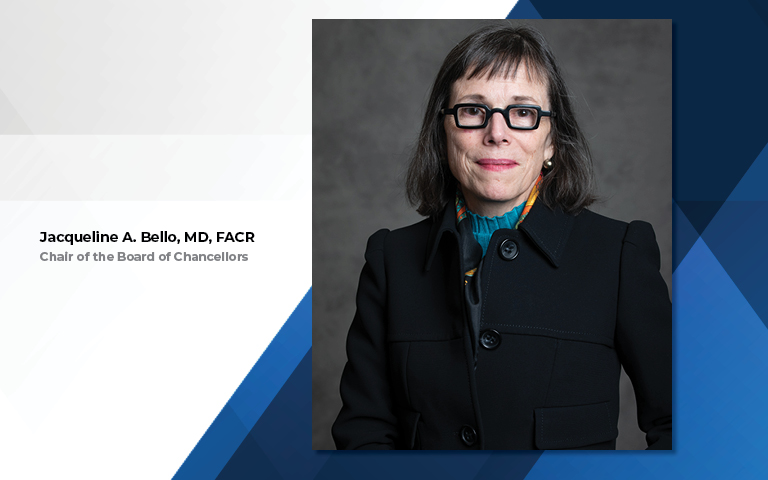The College’s Centennial celebration at the 2023 ACR Annual Meeting last month provided a wealth of information and opportunities to exchange ideas with members from every walk of the field. Ahead of the event, with the goal of uncovering what our members think the future of radiology may hold, our ACR Centennial Committee worked in tandem with ACR staff to develop and disseminate two short surveys. The responses were thoughtful and enlightening — providing us invaluable insight into how the specialty may evolve in the coming years.
The surveys posed a variety of questions around healthcare policy, AI, quality and safety, physician wellness, physician shortages, COVID-19 and more. One survey focused on practicing physicians and the other on medical students. There were close to 200 respondents combined — though the vast majority were practicing radiologists — sharing their concerns, lessons learned and what excites them about radiology and its constantly evolving landscape.
Among practicing radiologists, most agree that the COVID-19 pandemic significantly altered working environment dynamics and changed communication patterns between themselves and referring physicians. About half think COVID-19 changed referrers’ ordering patterns and accelerated changes to technology. It was interesting to see the data support what we’ve all been feeling.
The survey showed there is near-unanimous agreement on the importance of health policy and economics as radiology moves forward. Our members are also highly interested in AI and machine learning, watching it very closely, along with the commoditization of the specialty. Survey respondents believe quality and safety policies present the most opportunities for positive change while commoditization is seen as the biggest threat — especially as we see venture capitalists buying more and more radiology practices.
The survey identified burnout within radiology as a major concern, with the majority of respondents worried about wellness within their own practice group or department. However, fewer expressed personal concern. Among the potential causes of burnout listed in the survey, physician and staff shortages were most commonly cited. We all seem to be feeling the pinch of doing more with less.
The survey identified reimbursement and practice creep, or encroachment, as areas of concern now and into the future. In contrast, AI and machine learning will catalyze some of the most exciting changes in radiology over the next five to 15 years, respondents say. These are two topics that seem to come up in sessions and discussions no matter where we go these days.
There was a wide range of responses to the question, What advice would you offer your former self? Maintaining a better work-life balance and slowing down was a popular answer. Other responses included getting involved sooner with local and national medical societies, being more of a self-advocate with management, remembering that there are patients behind the images, making more time for direct patient contact and never assuming it is too late to change work environments if you are unhappy. Most respondents, however, say radiology was a great medical path and that they plan to stay in their current work setting. That is good news.
The makeup of our membership was a consideration when the Centennial Committee was garnering information. A combined 57% of respondents work at an independent private practice or academic practice. Radiologists working at a hospital or within a hospital system account for 14% of respondents. Most of the physicians surveyed have been in practice for at least 10 years, and 14% identified as retired. Nearly 90% of respondents reported living in an urban or suburban area of the country, with only 10% living and working in rural areas. Most practicing physician respondents were male and an average age of 55 years old. For medical students, respondents were also mostly male, with an average age of 30.
It should be noted that a very small percentage of medical students responded to their survey. As a result, we have little data about what may guide their future career paths. Based on the answers of those who chose to participate, most are likely to pursue radiology as a career.
As we continue to celebrate the College’s 100-year anniversary, we rely on members to inform us about what the future of radiology means to them and how current events may impact outcomes. Most interesting will be seeing how factors we haven’t even thought of today will impact our specialty in the future.
Feedback from these surveys has given us a unique snapshot of what members expect from our College. We hear you and will continue listening so that we may serve you and our collective patients with the high level of care and commitment you exemplify.

